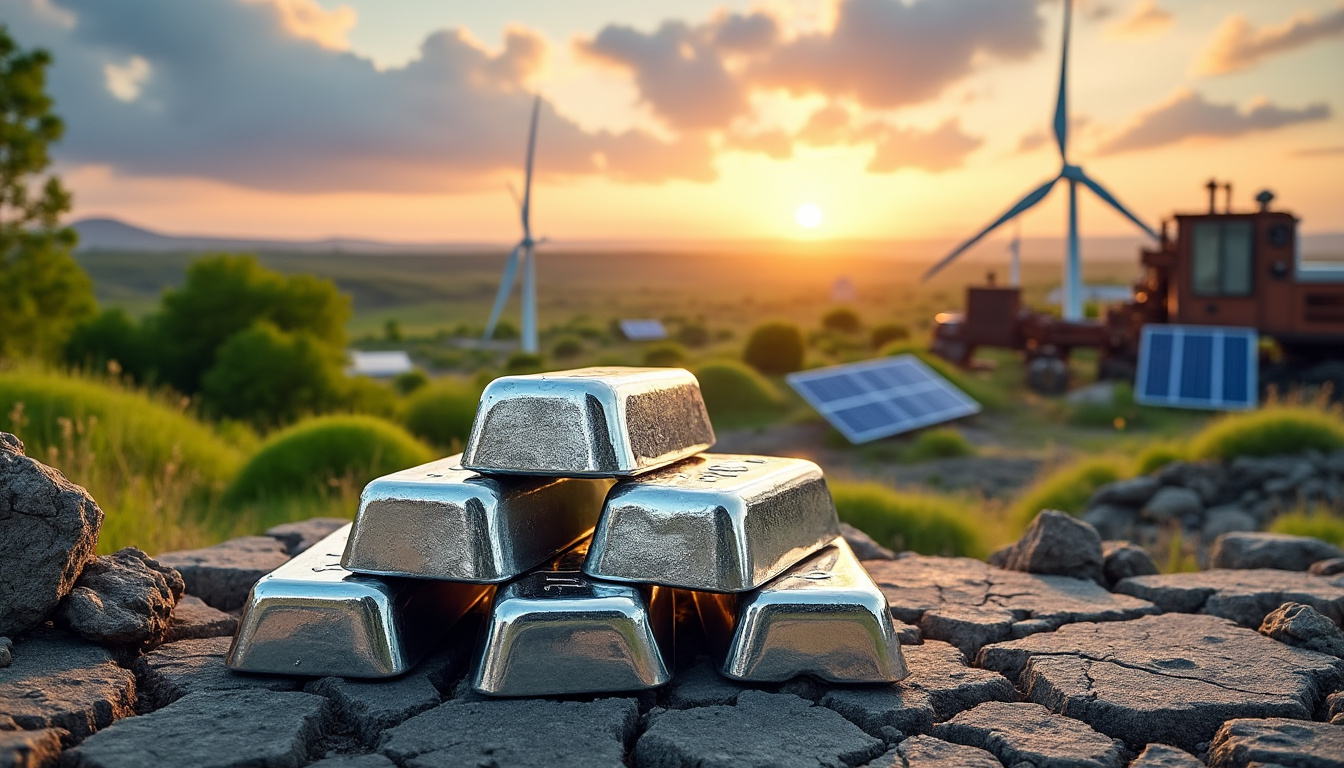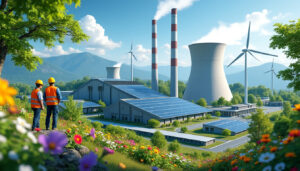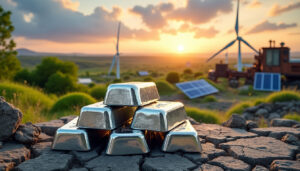Your online navigation is shaped by invisible elements.
Are you looking to understand how your data is used?
Discover the behind-the-scenes of digital personalization.
We use cookies and data to deliver and maintain high-performing services. This includes protection against spam, fraud, and abuse, as well as monitoring outages. By analyzing our audience’s engagement and site statistics, we better understand the usage of our services and improve their quality. You also have the option to customize your experience by choosing to accept or reject certain uses of cookies.

The ecological transition is at the heart of current global concerns, pushing industries and governments to rethink their modes of production and consumption. However, this green transformation is accompanied by an increased demand for silver, a precious metal essential in various technological and industrial applications. This silent yet significant increase in demand contributes to a historic shortage that could have profound repercussions on the global economy.
Why is the ecological transition increasing the demand for silver?
The silver metal plays a crucial role in several green technologies, including solar panels, electric vehicles, and energy storage systems. Indeed, silver is used as a catalyst in photovoltaic cells due to its high efficiency in converting solar energy into electricity. Furthermore, the batteries of electric vehicles require silver components to enhance their performance and durability.
According to a recent study, the demand for silver could grow by more than 30% over the next few years in direct response to the expansion of green technologies. This increase is fueled by government policies aimed at reducing carbon emissions and encouraging the adoption of renewable energies. Moreover, the rise of silver economies in the United States opens new opportunities for the mining and distribution of silver, further accentuating overall demand.
What are the causes of the current silver shortage?
The current silver shortage results from several interrelated factors. Firstly, global silver production has not kept pace with increasing demand. Existing mines are reaching their production limits, and new mining projects face significant regulatory and environmental obstacles. This limitation of supply, combined with explosive demand, creates an imbalance in the market.
Additionally, speculative investments in silver have also influenced availability. Many see silver as a safe-haven asset during times of economic uncertainty, driving up prices and further reducing accessibility for industrial uses. For example, China, as a major consumer and producer of silver, is experiencing constantly increasing domestic demand, exacerbating the scarcity in the international market.
What impact will this shortage have on the global economy?
A silver shortage could have vast and varied economic consequences. Industries dependent on silver, such as renewable energy and electronics, may see their production costs rise significantly. This could result in an increase in the prices of finished products, making green technologies less competitive compared to traditional alternatives.
Moreover, rising silver prices could affect financial markets. As a precious metal, silver is often used as a hedging asset against inflation and economic instability. Increased demand could lead to greater price volatility, posing challenges for investors and financial institutions. Additionally, silver-producing countries might benefit from increased revenues, creating economic imbalances between resource-rich nations and those that rely more on imports.
How are industries adapting to this shortage?
In response to the silver shortage, industries are seeking innovative solutions to mitigate the impact of this crisis. One of the main strategies is to recycle silver from electronic waste and other secondary sources. Recycling not only reduces dependence on mining but also decreases the ecological footprint of traditional mining extraction.
Furthermore, research and development play a crucial role in discovering substitutes for silver in certain applications. Researchers are working on alternative materials that could replace silver in photovoltaic cells or batteries, although these solutions are not yet widely adopted. Perennial from Singapore, for example, is betting on a dynamic silver economy by collaborating with technology partners to develop high-performing materials.
What solutions can be considered to mitigate this silver crisis?
To address the silver crisis, several solutions can be considered. First, increasing investments in new recycling technologies could improve the efficiency of silver recovery from waste. Furthermore, government policies encouraging responsible extraction and resource reuse could help stabilize the market.
Moreover, international collaboration is essential for sustainably managing the global demand for silver. Partnerships between producing and consuming nations can facilitate balanced exchanges and a more rational use of available resources. Additionally, the commitment of employers to adopt sustainable practices also helps reduce pressure on natural resources by promoting a circular economy.
Finally, education and consumer awareness play a crucial role in managing demand. By understanding the importance of silver in the ecological transition, consumers can adopt more responsible behaviors, thus favoring an optimized use of available resources.
What are the upcoming challenges for sustainable silver management?
Sustainable management of silver in the face of the ecological transition presents several major challenges. One of the main obstacles is the need to balance growing demand with responsible and environmentally friendly production. Traditional mining extraction has already been criticized for its ecological impacts, and increasing exploitation could exacerbate these issues.
Furthermore, fluctuations in silver prices can lead to economic uncertainty, making long-term planning difficult for businesses and governments. This volatility can deter investments in green technologies, thereby slowing progress towards a more sustainable economy.
Another challenge lies in establishing effective regulatory frameworks that encourage recycling and responsible use of resources. Without clear policies and appropriate incentives, efforts to mitigate the shortage could be fragmented and ineffective.
Finally, international cooperation remains essential for sustainable silver management. Disparities between nations in terms of technological capabilities and mineral resources require a collaborative approach to ensure equitable distribution and optimal use of available resources.
How does demography influence demand for silver in the ecological transition?
Demographic changes play an indirect yet significant role in the demand for silver related to the ecological transition. With aging populations in many countries, particularly in the United States and Europe, the needs for green infrastructure and sustainable technologies are increasing. Baby boomers, as a significant demographic group, impact economic and environmental policies, driving increased investments in renewable energy and sustainable solutions.
Additionally, studies show that the silver tsunami could stimulate demand for silver for technologies facilitating aging in place, such as digital health systems and sustainable mobility solutions. These demographic trends create a synergy with the goals of the ecological transition, emphasizing the need for careful and innovative management of silver resources.
Moreover, the silver economy in China, characterized by an aging population, also influences overall demand for silver. By heavily investing in green technologies to support an aging population, China is increasing its domestic consumption of silver, thus contributing to the global shortage.
These demographic dynamics underscore the importance of integrating silver resource management strategies within the broader framework of sustainable planning and technological innovation. In response, businesses and governments must anticipate these changes and adapt their policies and practices to ensure sufficient availability of silver while supporting long-term ecological goals.










